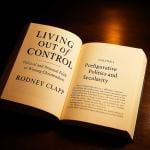Bauman ( Life in Fragments: Essays in Postmodern Morality , 148-50 ) notes that in the past public executions and blood sports “were rare, festive and party-like occasions,” within the realm of Bakhtin’s “carnival culture – the periodical spectacular reversals of the daily norms” that underscored “the binding routine of quotidianity.” Putting public violence in a carnival setting was”an emphatic statement about the unusuality and exceptionality of whatever happened during the ‘breaks’ in normal life.” The institution of carnival itself reinforced the division of carnival and everyday.
We no longer recognize the exceptionality of violence, Bauman says: “today we live in a constant carnival of cruelty; obviously, ‘constant carnival’ is a contradictio in adiecto , a carnival that is constant is no more a carnival – which means, in fact, that sightings of cruelty have spilled over from the separated and isolated reserve into the mainstream of daily experience.” As a result, we suffer from a “viewing fatigue” that can only be overcome by yet more shocking, yet more gory violence. Normal levels of violence constantly rise.
This furthers what Bauman describes as the “adiaphorization” that characterizes the modern age, the habit of treating certain actions or objects as morally neutral and free of moral evaluation (149).
The saturation of our lives with images of violence, the mediation of violence through the media, puts aesthetic criteria into the place of moral criteria: “the ‘not for real’ becomes fast the standard for the ‘for real.’” Even actual war is no longer “combat” as the soldiers fight more and more remotely from their targets.
Add to this the shift in identity. Bauman suggests that individuals no longer conform to a singular pattern of identity. Instead, “one needs a mixture of metaphors,” and he proposes “the figures of the stroller ( flaneur ), the vagabond, the tourist and the player” (155). These all share the habit of treating the “Other primarily as the object of aesthetic , not moral evaluation; as a source of sensations , not responsibility .” Even the most intimate relationships are freed from moral judgment. The “disengagement and commitment-avoidance favoured by all four postmodern strategies have a backlash effect in the shape of the suppression of moral impulse and the disavowal and denigration of moral sentiments” (156).
This makes for a volatile situation: “Thanks to the new adiaphorizing concoctions, violence may return to the sites from which the ‘civilizing process’ promised to evict it forever: to the neighbourhood, to the family, to the couple partnerships – the traditional sites of moral proximity and face-to-face encounter.” He sees a symptom of this in the difficulty that contemporaries have in distinguishing “stern parental guidance and the abuse of children, flirting and harassment, sexual advance and violent assault” (156). Violence in postmodernity, he fears, will be diffused and decentralized, not just in image but in reality.











